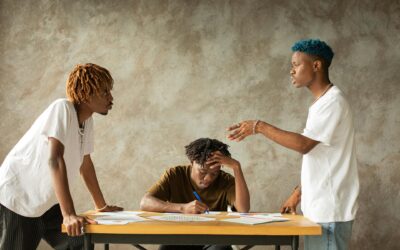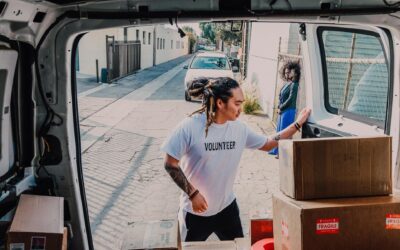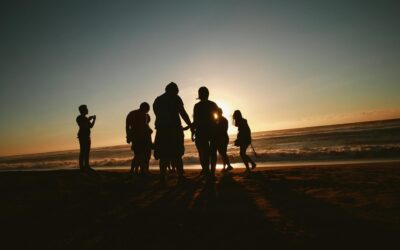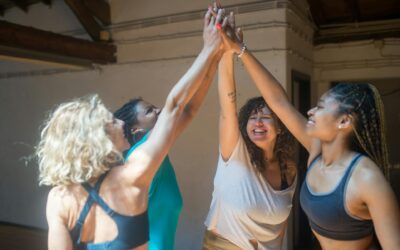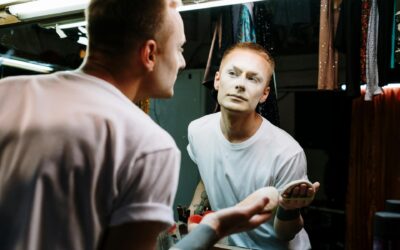Photo by Polina Kovaleva on Pexels.
← CHAPTER OVERVIEW
Let’s make a plan
Dear Creatrix,
How did you enjoy writing your bucket list?
What’s on it? And are you excited about it?
I’ve divided mine into people I’d like to meet, places I’d like to go, activities I’d like to try and another category which I will share with you below, but before we begin to look at all the things we discovered about ourselves last week, there’s one point from the introduction that I’d like to come back to.
And that is the question of WHY we are doing this.
Like I said then, we wouldn’t want to become our best selves because we’re not good enough now – quite the opposite, actually.
We already have and are everything, but we often doubt that this is actually true.
We often think about ourselves in negative ways, doubt our abilities or don’t trust ourselves to follow through, or to achieve things we’ve never tried before.
Not only that, but WE are the ones stopping ourselves from achieving what we want to by not even allowing ourselves to think about it.
If we can’t imagine ourselves winning or succeeding at something, then it’s just not going to happen.
So we always have to start with what we believe and think.
If we believe we can do something, we can.
If we don’t believe in ourselves, we can’t.
And I have my guides here to help, telling me what to write because, they say, it’s very ridiculous to watch how much we mistrust ourselves.
I’d like to add, though, that it’s not ridiculous for us, as all we’ve probably heard about and experienced in our lives were limitations – and so we expect them.
And as the people who raised us, most likely dealt with a lot of hardships and doubts and did not allow themselves to follow their bliss, they raised us in the best way they could – doubting us and our abilities, like they doubted their own.
And it’s always worth looking at what our parents or the people who raised us believed in.
Did they believe that you have to work hard to succeed?
Did they believe that you have to compromise to be loved?
And even if you consciously disagree with those beliefs, just check if you might not subconsciously still live them.
But whatever their and your beliefs were when they raised you and what yours are now – we can change them.
Limiting beliefs are only as real as they are in our minds – the second we refuse to let them stop us, we open up to new possibilities.
And we will test and practice how to change this in some areas in this chapter.
So, we do what we do, in this chapter, so we can reduce the barriers in our minds that keep us from living our full potential.
Because we, you, I, are already perfect and have it all.
We’ve just not acknowledged all of our possibilities and potential yet.
So, when we sit down and allow ourselves to think and dream big, we create new opportunities for ourselves and take the first step to making them possible.
Every creation starts with a thought and then a word, and we use both in these exercises to open the space for something to happen, that might have never happened in our family lines before.
I always remember Ken Honda, who wrote the wonderful book Happy Money say: “You can’t take a bus if you want to go from Japan to the USA” – pointing at the fact that often times we metaphorically travel by the same bus, that our parents took to work, when we intend to get to an entirely different destination (that no bus can bring us to).
If everyone we know does things a certain way, e.g. takes the bus, it’s easy to think that we too have to take the bus to get to where we want to go.
But that doesn’t make it true.
And it is, why, in self-actualization coaching, we learn from the best.
We have a look at how people who have already achieved what we’d like to achieve have done it, so we can learn from them and that might mean, we will have to see what it feels like to take a boat or a plane instead of the bus that we’re used to.
So that is why we started talking about our dreams in the last lesson, and the things we would like to do, before we talked about the steps we need to take to get there – because they depend on our destination.
And it is also why we needed the kind of intervention, we took, by bringing in the fact of our mortality.
If we continue sitting on our bus and dream about one day arriving in the US, we might as well dream for the rest of our lives.
However, when we realize that there is only a certain number of days left in our lives, it might give us the realization that we need to change something now, if we really want it, even though the bus ride is quite comfortable, and we know that it generally keeps us safe.
And I want to make one thing very clear here.
We are all on our unique journeys, and we don’t all need the same thing at the same time.
Some might have had such a traumatic past and still deal with feeling threatened and insecure in their lives, and the change that they need to create in their lives is stability.
You might have been walking, or tramping or taking whichever ride was available to you on a day-to-day basis, so you long to be able to take the bus each day to safely get you to your destination.
And if it’s not true for you, this might have been true for your parents, and because they took that step, you are now somewhere else.
No one is more right or wrong, we each do the best we can.
We’re all on our journey, and the only thing that matters as we go along, is that we proudly choose for ourselves our next steps – no matter what they might be.
Because it really doesn’t matter what I do and choose or what somebody else does and chooses – all that matters is what YOU would like to have more of in your life right now and once you have that, and feel like you’ve learned enough from it, you can decide to move on and change something again.
Just make sure that you take one step at a time and that you are on YOUR way and not on somebody else’s.
And now we’ll have a look at our Wheel of Life, the questions from the second lesson, our obituary and our bucket list to formulate a plan for our next moves and the project(s) we’ll start working on in the next lessons.
Photo by Tobi on Pexels.
The Wheel of Life
Was this the first time for you doing your Wheel of Life? Or did you do it before?
What really surprised me, when I d…



